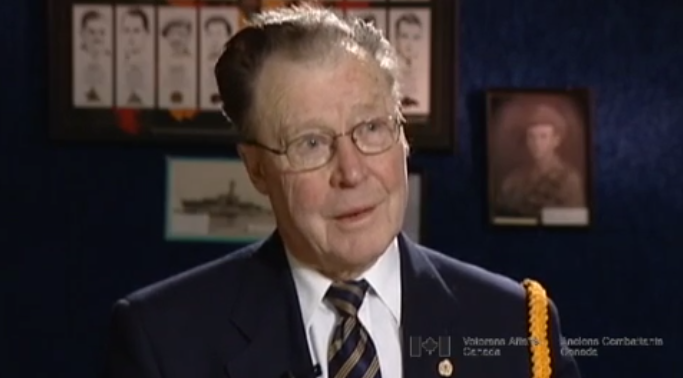Stores, Tanks and Flags
Heroes Remember
Stores, Tanks and Flags
Transcript
Description
Mr. Laird describes how he progressed from joining up with ordinance, to becoming a signaller.
Edwin George Laird
Mr. Laird was born in Verwood, Saskatchewan and attended school there until grade 4. In 1934, when Mr. Laird was 11 years old his father passed away. Mr Laird and the rest of the family moved to a homestead in the bush north of Verwood. Not having a radio until 1940, news of war was very limited. As they started to hear radio coverage, Mr. Laird began to think he should get involved. In February 1942, Mr. Laird travelled to Saskatoon to enlist, and after joining the tank corps was sent to Guelph, Ontario, for training. Soon after he was sent to England where after completing his basic training, he was made a signaller. After advance training he was assigned to the 2nd Field Regiment On June 10, 1943, Mr. Laird disembarked from Scotland, destined to invade Sicily a month later. From there Mr. Laird fought across Italy with the Vandoos and Saskatoon Light Infantry. Eventually, Mr. Laird and other Canadians in Europe were sent to join with Canadian Forces in France. From there they moved into Belgium, and Germany, remaining there until the war ended. Mr. Laird returned to Canada in early 1946, and received his discharge soon after.
Meta Data
- Medium:
- Video
- Owner:
- Veterans Affairs Canada
- Duration:
- 03:55
- Person Interviewed:
- Edwin George Laird
- War, Conflict or Mission:
- Second World War
- Branch:
- Army
- Units/Ship:
- Second Field Regiment
- Rank:
- Private
- Occupation:
- Signalman
Related Videos
- Date modified:




